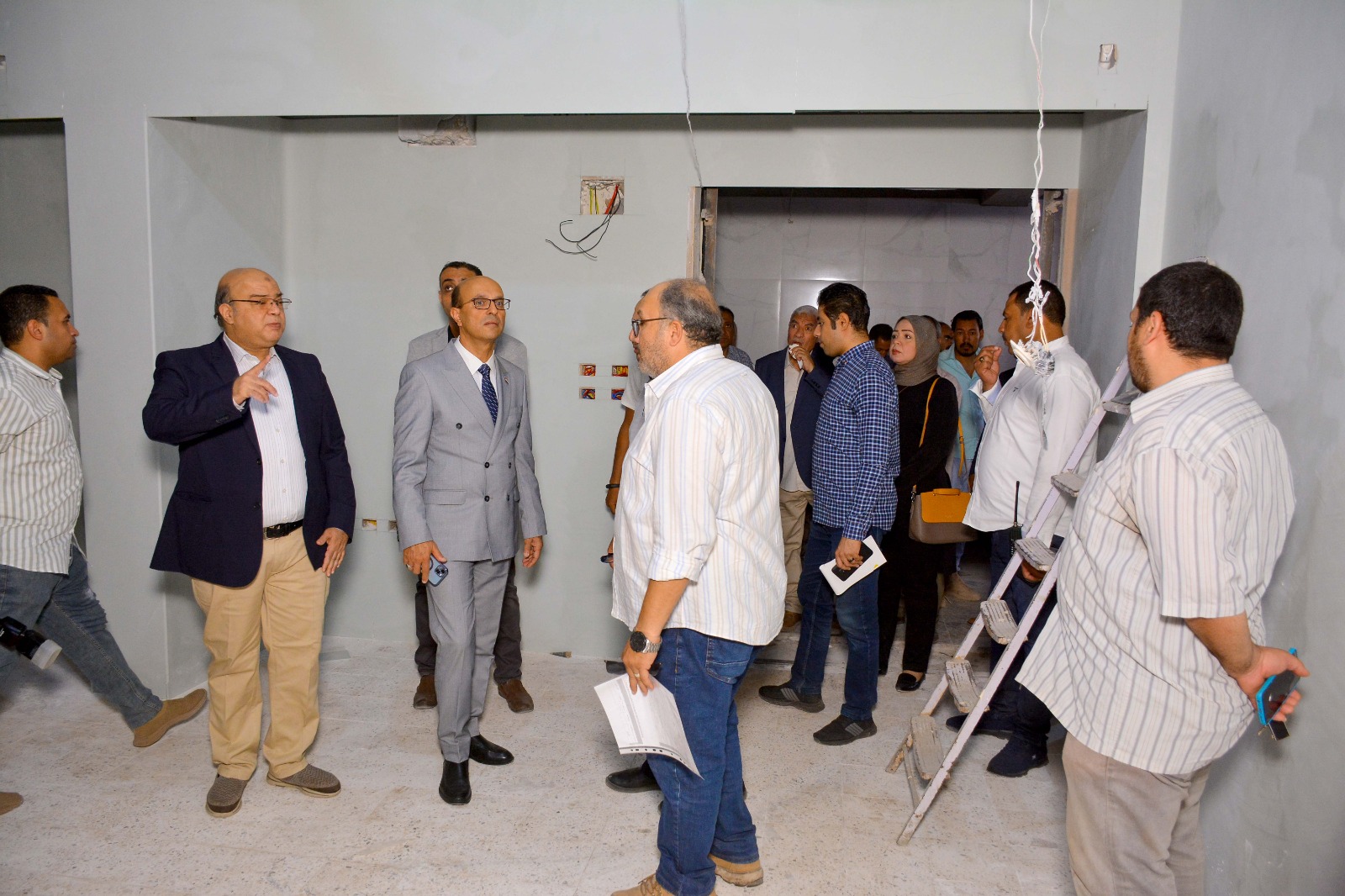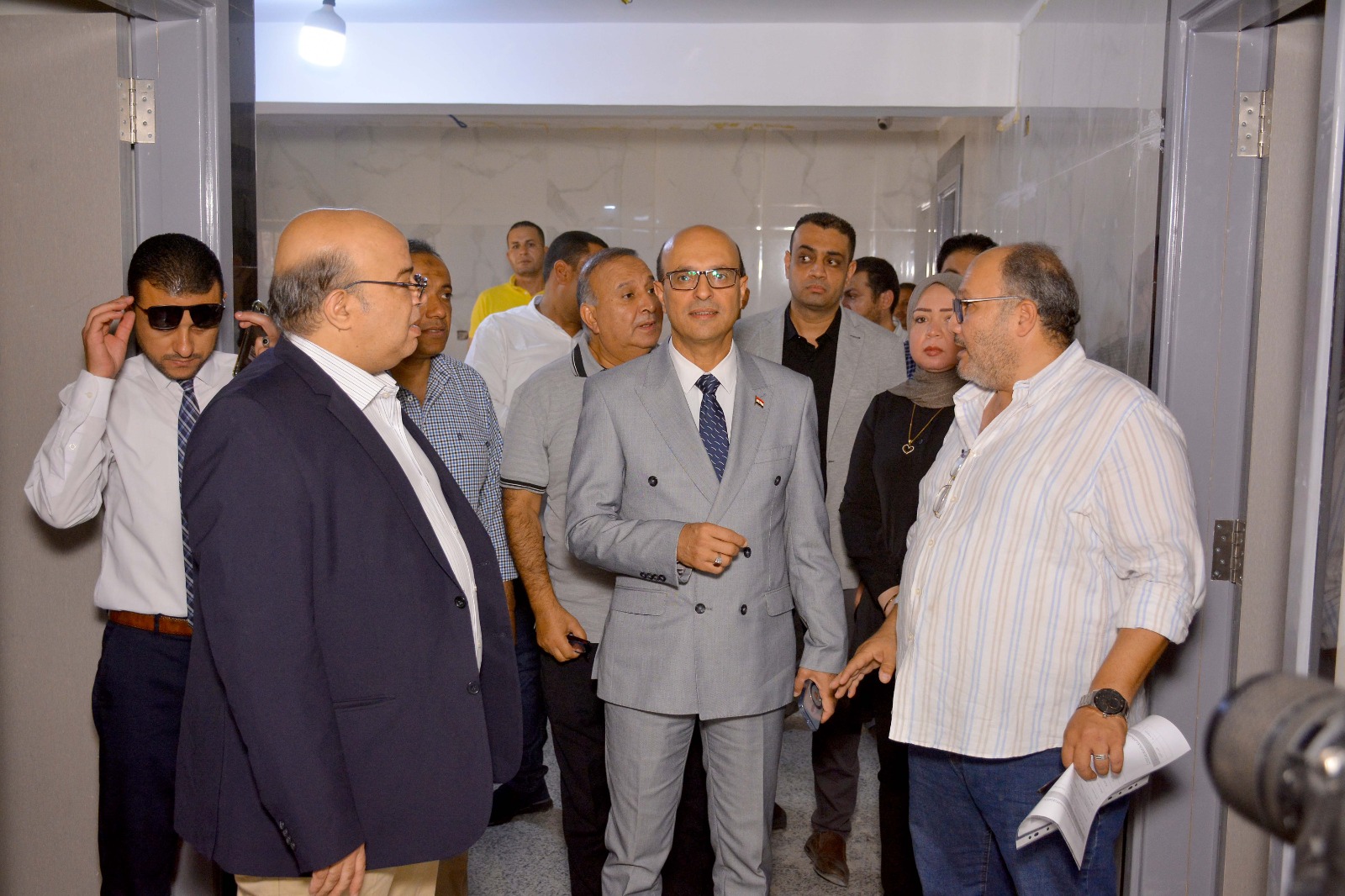Prof. Ahmed Al-Minshawi, President of Assuit University, inspected the renovation and rehabilitation work of the New Emergency Reception Unit at the main University Hospital to ensure the good progress of work and follow up preparations within the framework of Assuit University Hospitals’ keenness to develop their units so as to provide the residents of Assuit Governorate and neighboring governorates with high-level medical services under the auspices of Prof. Ahmed Al-Minshawi, University President; Prof. Alaa Attiya, Dean of the Faculty of Medicine and Chairman of the Board of Directors of the University Hospitals; and Prof. Ihab Fawzy, Executive Director of the University Hospitals.
During his tour, Prof. Ahmed Al-Minshawi, President of Assuit University, was accompanied by Prof. Ihab Fawzy, Executive Director of the University Hospitals; Prof. Alaa Abdel-Monem, Director of the Main Hospital; Prof. Dina Ali, Deputy Manager of Reception Affairs; and Eng. Abeer Bakheet, General Manager of Engineering Affairs Administration of the University Hospitals.
During his tour, Prof. Ahmed Al-Minshawi emphasized that developing Assuit University Hospitals comes within the framework of the comprehensive strategic plan adopted by the Egyptian State to support and develop university hospitals in promoting the health system and the level of medical services provided for the citizen. He also praised the development work witnessed by Assuit University Hospitals and the increase in their capacity so that they can fulfill their mission of serving Upper Egyptian patients.
Prof. Ihab Fawzy pointed out that the new reception unit represents a medical breakthrough within Assuit University Hospitals because of its distinguished capabilities. He also indicated that the administration of the University Hospitals is keen to carry out the necessary replacement, renovation and expansion operations in all medical departments and units.
It is worth mentioning that the new reception unit includes a ward for men, a ward for women, an isolation ward, a cardiopulmonary resuscitation room (CPR), a small operating theatre, an intermediate care unit, an intensive care unit, external examination, and assembly points that can accommodate twice the current number of patients.







